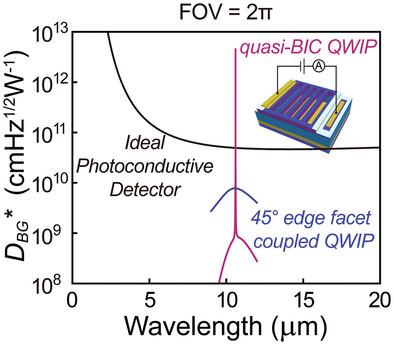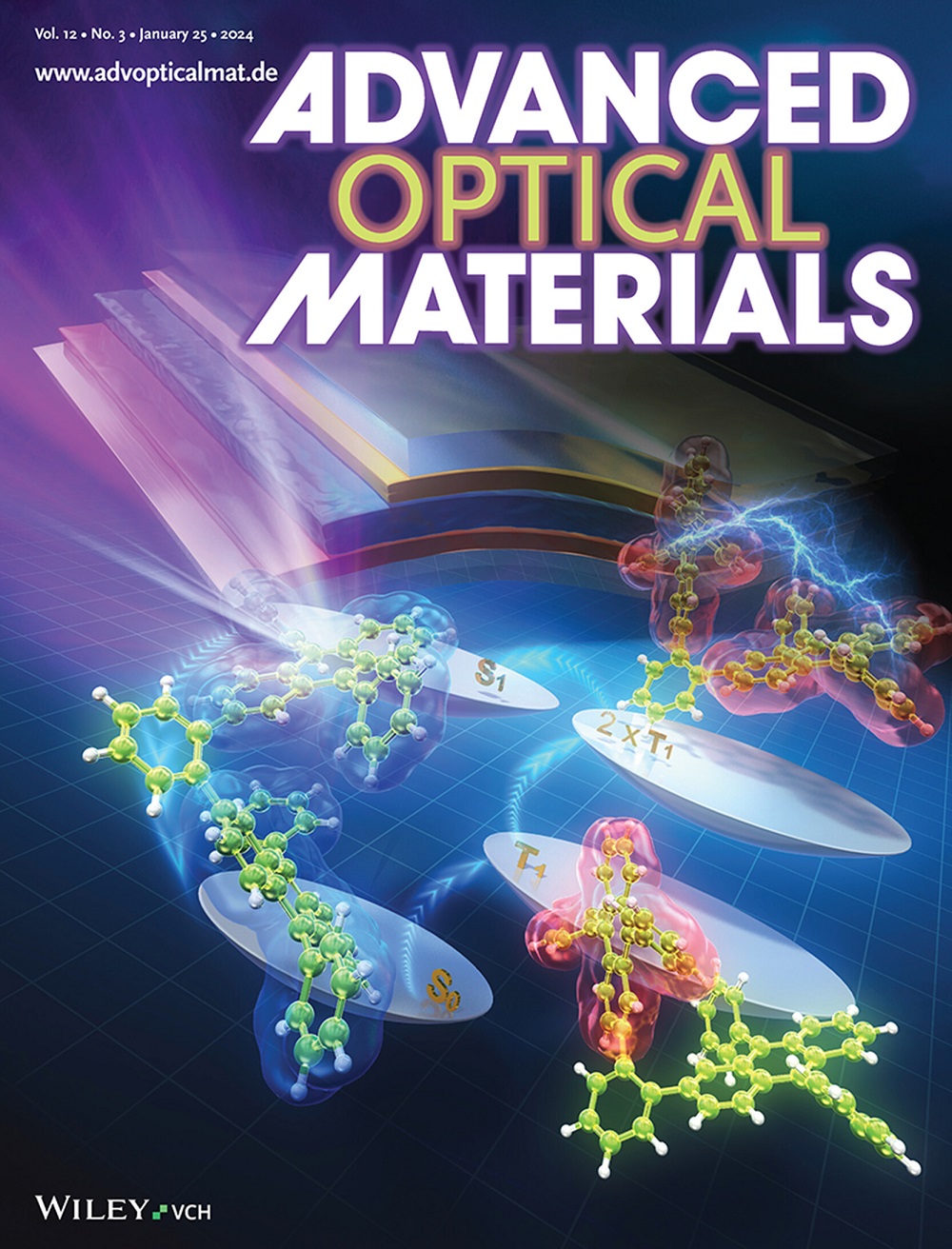Achieving Ultra‐High Background‐Limited Detectivity by a Brillouin Zone Folding Induced Quasi‐Bound State in the Continuum
IF 8
2区 材料科学
Q1 MATERIALS SCIENCE, MULTIDISCIPLINARY
引用次数: 0
Abstract
During infrared detection, the thermal radiation from the background generates substantial photon noise and thus severely limit the capability of an infrared detector to identify a target. Going beyond this limitation has been a long‐standing challenge in the development of infrared detectors. This paper proposes to break this limitation by creating a narrow photoresponse band with a high peak responsivity to reject the background radiation and enhance the responsivity to the target with characteristic emission lines. This scheme is numerically demonstrated in a dimerized grating integrated quantum well infrared photodetector, based on critical coupling with a Brillouin zone folding induced quasi‐bound state in the continuum (BIC). The asymmetric deformation of the grating structure folds the photonic band and generates a quasi‐BIC with a tunable high radiation

通过布里渊区折叠诱导的连续准束缚态实现超高本底限制探测性
在红外探测过程中,来自背景的热辐射会产生大量光子噪声,从而严重限制了红外探测器识别目标的能力。如何突破这一限制一直是红外探测器开发过程中面临的挑战。本文提出通过创建一个峰值响应率高的窄光响应带来拒绝本底辐射,并增强对具有特征发射线的目标的响应率,从而打破这一限制。该方案在二聚光栅集成量子阱红外光探测器中进行了数值演示,其基础是临界耦合与连续体中的布里渊区折叠诱导准结合态(BIC)。光栅结构的不对称变形折叠了光子带,并在Γ点产生了具有可调高辐射 Q 因子 (QR) 的准 BIC。通过降低量子阱的掺杂浓度以获得高吸收 Q 因子 (QA),并调整 QR 使 QR = QA 以获得临界耦合,从而实现了具有高峰值响应率的窄带光响应,并在 2π 视场范围内获得了 4.55 × 1012 cm Hz1/2 W-1 的本底限制特定检测率,超过理想光电导极限 92 倍。
本文章由计算机程序翻译,如有差异,请以英文原文为准。
求助全文
约1分钟内获得全文
求助全文
来源期刊

Advanced Optical Materials
MATERIALS SCIENCE, MULTIDISCIPLINARY-OPTICS
CiteScore
13.70
自引率
6.70%
发文量
883
审稿时长
1.5 months
期刊介绍:
Advanced Optical Materials, part of the esteemed Advanced portfolio, is a unique materials science journal concentrating on all facets of light-matter interactions. For over a decade, it has been the preferred optical materials journal for significant discoveries in photonics, plasmonics, metamaterials, and more. The Advanced portfolio from Wiley is a collection of globally respected, high-impact journals that disseminate the best science from established and emerging researchers, aiding them in fulfilling their mission and amplifying the reach of their scientific discoveries.
 求助内容:
求助内容: 应助结果提醒方式:
应助结果提醒方式:


